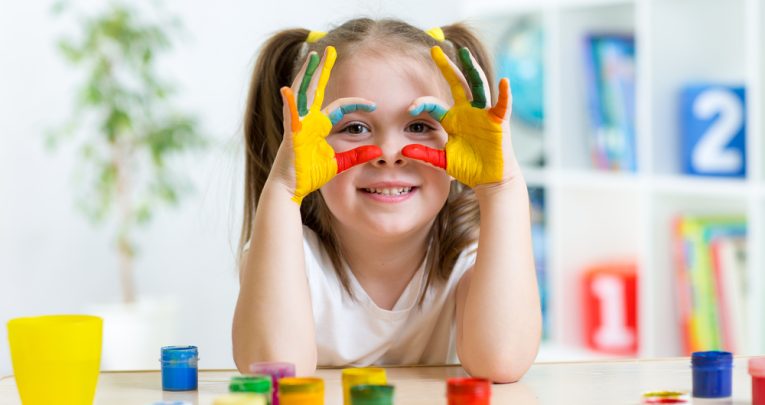You Messing with Me? – The Joys of Messy Play

So long as they're properly planned and largely child-led, messy play activities can do wonders for your early learners' cognitive and physical development, says Alistair Bryce-Clegg…

Messy play is an opportunity for children to experiment, touch, feel, problem solve, apply knowledge, guess, take a risk – and make a mess. If it’s too controlled or restricted by adults, then it isn’t really messy play.
For me, the messier the better. When children can be truly engaged and absorbed in the process of thinking, that is when they will be truly engaged in the process of learning. By all means, keep a packet of wipes, a bowl of water and a hot mop on standby – but wait until the children have finished doing their ‘thing’ before you swoop in!
Skill or experience?
When planning your messy play opportunities, it’s important to ask yourself why you’re doing them. What’s prompted you to give your children this opportunity (other than seeing a nice activity on Pinterest!)? Do you want to introduce the children to a new textural experience? Maybe you’re hoping to encourage some mark making.
Or is it the case that you’re helping your children to learn a new process, such as how to texturise paint with sand or create a mould? It may be that you’re looking to teach a higher order thinking skill, like prediction. Sometimes it will be one or the other, sometimes both – but it’s always worth asking the question.
The process can be as rewarding as the end result
With very young children, we will often present them with a messy play ‘activity’ or ‘opportunity’, where all of the preparation has already been done for them and they experience just the finished product. As children acquire more experience of messy play and their skill level grows accordingly, it’s really useful to include the preparation process as part of the activity itself.
If you want to use textured dough, let the children mix and make it. If you’re using thick paint, let the children thicken it with something like flour. The finished product might not always come out exactly as you intended – but the learning will be priceless!
Not just about hands
When thinking about messy play, it’s tempting just to focus on creating opportunities for children to use their hands and fingers, giving them lots of textures to touch, feel and manipulate. While this can be useful, don’t forget that you can also create messy play experiences for other parts of the body.
Feet are perhaps the next most obvious port of call. Being able to get messy with your feet and toes is not only great fun, but also fantastic for developing balance, proprioception, and cognitive and vestibular development – especially if you stand up while doing it! And you don’t have to stop at the feet; not when you can throw elbows, knees and even noses into the mix too!
Not everyone has a passion for cold porridge
Lots of children love getting stuck in when it comes to messy play, but there are always some that don’t. Sometimes this can be down to parental expectations to ‘be clean’, and sometimes it can be due to the child’s own sensory development – whatever the reason, they just don’t like it!
If that’s the case, then they’ll need slow and steady introductions to the joy of sticking your hand into a bowl of marshmallow slime. Some children might slowly begin to embrace the experience, while for others it will simply never be their favourite thing. It’s well worth having a chat with their parents to get to the root of the issue and see how you can support them with the child’s development.
Build on what they know
Through the messy play experiences that you give the children, you will be equipping them with all sorts of skills. Once they’ve had opportunities to explore texture, senses, viscosity, cause and effect (to name but a few), it’s important that they then have the chance to apply those skills in their everyday play and learning.
Do you encourage them to make their own play dough? Can they self select, mix and texturise their own paint? Is there provision for them to take their messy play skills to other parts of the environment, indoors and out? If we’re going to give them the skills, then it’s important that we let them use them.
‘What about the mess?’ I hear you cry. Just close your eyes and count to 10. There’s nothing that a whip round with a hot mop and a lie down in a dark room cant sort out!
Alistair Bryce-Clegg is an Early Years trainer, consultant and owner of ABC Does…; for more information, visit www.abcdoes.com or follow @ABCDoes












